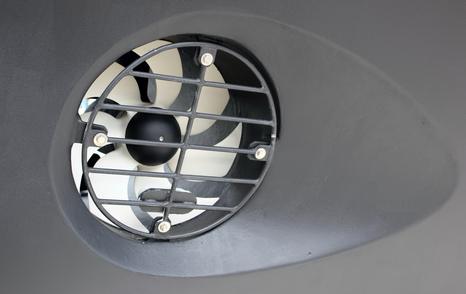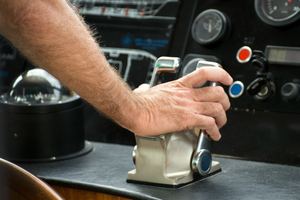A yacht thruster is an integral component designed to significantly enhance the maneuverability of yachts, ensuring smooth navigation, particularly in confined or crowded spaces such as marinas and harbors.
These propulsion systems are pivotal for yacht owners and captains seeking precise control over their vessels during docking, berthing, and other intricate maneuvers.
Types of Yacht Thrusters
Bow Thrusters:
- Strategically positioned at the front (bow) of the yacht.
- The primary function is to provide lateral thrust at the forward end.
- Enables the yacht to move its bow sideways, facilitating precise turns and navigation in tight quarters.
- Especially valuable when dealing with challenging docking situations.
Stern Thrusters:
- Located at the back (stern) of the yacht.
- Offers lateral thrust at the rear end of the vessel.
- Works in conjunction with bow thrusters to provide comprehensive control over lateral movement.
- Enhances the overall maneuverability, making it easier to handle the yacht in various scenarios.


Power Sources
Yacht thrusters are typically powered by either electric or hydraulic systems, depending on the vessel's design and specifications. Electric thrusters are known for their quiet operation and responsiveness, while hydraulic thrusters are recognized for their robust power and reliability. The choice between these power sources often depends on the yacht's size, configuration, and the specific requirements of the owner.
Electric Thrusters:
- Quiet Operation: Electric thrusters are known for their quiet and smooth operation. This is particularly advantageous for yacht owners and passengers who prioritize a peaceful and enjoyable onboard experience.
- Responsive Control: Electric systems provide precise and responsive control over the thruster, allowing for quick adjustments in real time. This is valuable during intricate maneuvers, such as docking in tight spaces.
- Ease of Installation: Electric thrusters are generally easier to install compared to hydraulic systems, which can contribute to a more straightforward integration process during yacht construction or retrofitting.
Hydraulic Thrusters:
- Robust Power: Hydraulic thrusters are recognized for their robust power and high torque capabilities. This makes them suitable for larger yachts or vessels that require substantial thrust for effective maneuvering.
- Reliability: Hydraulic systems are known for their durability and reliability. They can handle heavy-duty operations and are less prone to overheating, making them a preferred choice for yachts with higher power demands.
- Integration with Other Systems: Hydraulic systems can be easily integrated with other hydraulic components onboard, such as stabilizers or anchor systems, providing a cohesive and synchronized approach to yacht operation.
Technological Advancements
Advancements in technology and engineering have led to the development of sophisticated yacht thrusters equipped with advanced control systems. These systems enhance the precision and efficiency of lateral movements, contributing to an overall smoother yachting experience.

Integrated control panels allow captains to manipulate the thrusters with ease, ensuring optimal performance in various docking scenarios.
What are the Benefits?
The integration of a yacht thruster into the vessel's design offers several benefits:
- Ease of Navigation: Yacht thrusters simplify navigation, especially in crowded marinas or tight spaces.
- Reduced Stress: Precise control over lateral movement reduces the stress associated with docking and maneuvering.
- Enhanced Safety: The ability to make controlled turns enhances safety during close-quarter operations.
What are the Considerations?
- Yacht Size: The size of the yacht often influences the choice between electric and hydraulic thrusters. Larger yachts may benefit from the power and torque offered by hydraulic systems, while smaller yachts may find electric thrusters sufficient for their needs.
- Noise Preferences: Yacht owners who prioritize a quiet and serene onboard environment may opt for electric thrusters to minimize noise during operation.
- Maintenance Requirements: Both electric and hydraulic systems have their own maintenance considerations. Yacht owners should assess their preferences and the level of maintenance they are willing to undertake.
The choice of thruster power source is a critical decision for yacht owners, impacting the vessel's performance and the overall onboard experience. The selection between electric and hydraulic thrusters should align with the yacht's specific requirements and the preferences of those navigating and enjoying the yacht.


